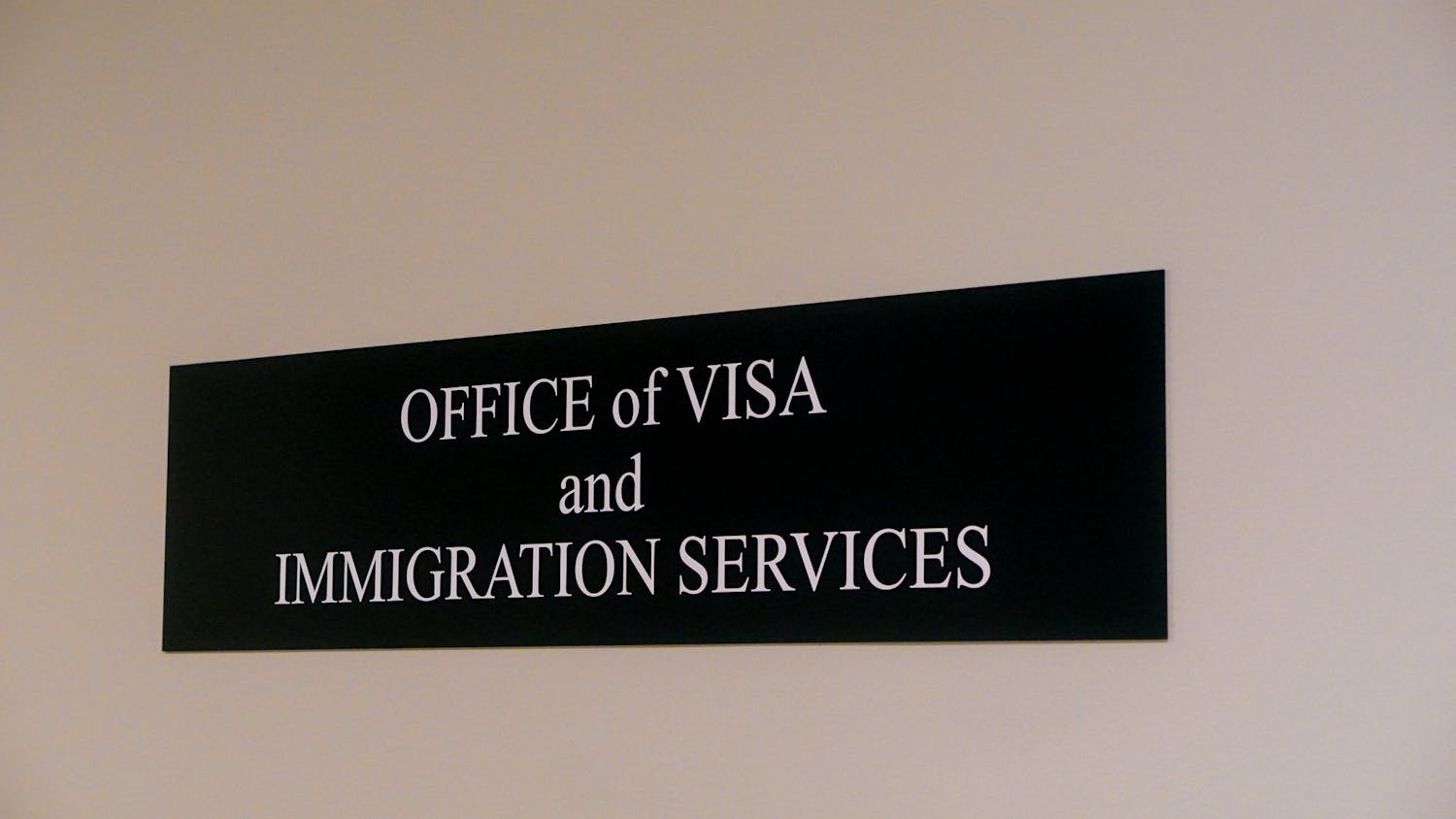Two student-run radio stations — WDBSand WFRD 99 Rock — celebrated major anniversaries last weekend.
Both stations, under the oversight of Dartmouth Broadcasting, have been key components of the Upper Valley’s sonic landscape for decades. WDBSmarked its 75th anniversary while WFRD turned 40.
About 70 alumni out of the nearly 2,000 invited attended the anniversary event. Organizers held panels on the history of Dartmouth Broadcasting, its present operations and its plans for the future.
“For the most part college radio stations are an untapped resource,” WFRD disc jockey Matt Rube ’19 said. “The one thing you can’t get from Spotify and Pandora are your friends. With WDCR we have the potential to create a music-social network that is campus-centric.”
WFRD 99 Rock is the third biggest radio station in the Upper Valley with 10,000 listeners tuning in at any one time, with peak numbers around 20,000.
Attempts to begin a radio station at the College began around 1902, but those early experiments met with administrative resistance. A campus license was finally issued for a campus radio station in 1920.
The radio was rudimentary then, Rube said. Rube — who, in addition to his role as a DJ is also director of alumni relations for Dartmouth Broadcasting — said radio was initially sent out to campus through the wiring in the heating vents. Official College recognition came in 1941, longer than was strictly necessary, according to Rube.
“The earlier radio experimenters got into trouble when a broadcast to campus intended to be the president’s remarks accidentally broadcast an in-studio producer who was cursing,” he said.
The then-College president was angered by the broadcast which had made it seem that he was cursing, Rube said.
Dartmouth Broadcasting is the umbrella organization under which WDCR — the web radio station — and WFRD 99 Rock operate. WDCR was the company’s first AM station, opening in 1958. In 1976, 99 Rock was introduced. Around 2008, the AM tower was taken down in order to make room for a softball field, and so WDCR moved to the internet.
Moving forward, Dartmouth Broadcasting hopes to do more with HD radio, Rube said. The development would not require a new tower but would require new technology applied to existing Dartmouth Broadcasting equipment. With the new technology, the company could broadcast both an FM channel and an AM channel.
“Dartmouth Broadcasting encompasses a wide range of activities: marketing, sports, music, news, talk shows, interviews,” Rube said.
Former Maryland Gov. Martin O’Malley was in the station’s studio last year during his presidential campaign. The station still has a ticker tape from the day President John F. Kennedy was assassinated in 1963, Rube said.
Heath Cole, Dartmouth Broadcasting’s adult advisor, said the radio station broke the news of the Kennedy assassination on campus.
“There used to be a system of chimes that were broadcast, the number indicating the urgency of the news,” he said. “When JFK was shot, for the first time on campus, five chimes rang out. We [the radio station] were the first to know, and we were the ones who broke the news on campus.”
Cole has been a part of Dartmouth Broadcasting for 23 years. He spoke with pride about four first-place NHAB Granite Mike awards Dartmouth Broadcasting won in 2015. In the 1970s and 1980s, the station frequently played new music from bands like Kiss, Aerosmith, Boston and others, he said.
Except for sports play-by-play analysis done by radio affiliate Chris Garrett and the afternoon drive-by done by Cole, all content is student-produced. The level of student involvement is exceptionally high for a 24-hour station, Cole said.
In order to engage audiences and produce compelling content, Cole said the station has to be 24/7.
“It’s like a restaurant: when you go, or in our case tune in, you expect to get a table, to hear your favorite music or talk show,” he said.
Ryan Hall ’19 is a disc jockey for Dartmouth Broadcasting. From 8 p.m. to 10 p.m., he is responsible for keeping 99 Rock running smoothly.
“On weekdays, I talk between songs, plug things like the Furious Five at 9, which is a call-in program we run where you can hear your favorite rock songs,” he said.
The station’s reach — 10,000 viewers every hour — is impressive, Hall said. In one recent contest, the winner was a listener from California, Hall said.
Cole estimated the radius of the station’s coverage to be 65 miles generally, but with radio sharing services and its web station, Dartmouth Broadcasting’s reach can be even further.
Kevin Patterson ’17 is the general manager of Dartmouth Broadcasting, responsible for both stations, as well as the news, sports and marketing department. Patterson said that Dartmouth Broadcasting receives no funding from the College and must generate its own revenue. This is especially true of 99 Rock, the commercial station that is the main revenue source for Dartmouth Broadcasting, through on-air advertising. The station receives ratings based on the music it plays and the number of people listening.
Patterson said that he believes working for the radio forces you to look beyond the Dartmouth Bubble.
“You have to consider the audience, which is demographically different than the student body because it is largely composed of Upper Valley residents, or people driving through the area,” he said.
Correction appended: (May 4, 2016)
The original version of this article incorrectly identified the radio station WDBS as WBDS. The article has been updated to reflect this change.



